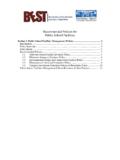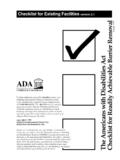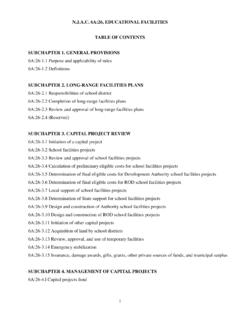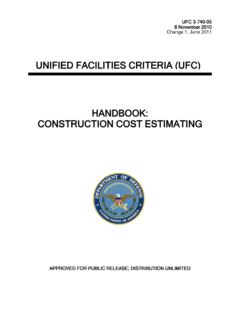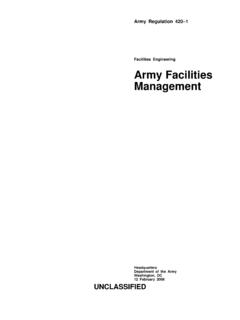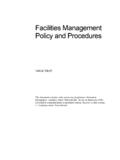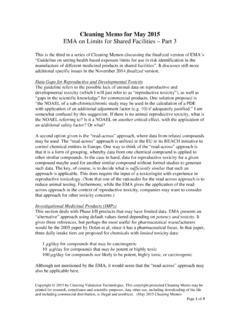Transcription of SEALABILITY OF MICROBIOLOGICAL …
1 SEALABILITY OF MICROBIOLOGICAL containment LEVEL 3 AND 4 facilities Contents: ASSESSING ROOM FREQUENCY OF SEALABILITY 1 INTRODUCTION 1. The Approved Code of Practice (ACoP) supporting the Control of Substances Hazardous to Health Regulations 2002 (COSHH) requires that, for containment level (CL) 3 and 4 facilities , the workplace is to be sealable to permit disinfection. In practice, this means that once the workspace has been filled with the fumigant it must be contained within the room at an appropriate concentration and for the required time to allow effective disinfection. The fumigant should not be allowed to escape from the room until it is extracted safely. 2. The most effective means of disinfecting a whole room is to use a gaseous/vaporised disinfectant since this will contact all surfaces. Currently, the most common means of disinfecting CL3 and CL4 facilities is to fumigate using formaldehyde vapour. The purpose of the requirement for SEALABILITY is to prevent the escape of fumigant from the room during the fumigation process.
2 Presently, formaldehyde has a workplace exposure limit (WEL) of 2 ppm for both short and long-term exposure periods (see EH40/2005 Workplace exposure limits). However, recent evidence has raised concerns relating to the development of nasopharyngeal cancer in workers exposed to formaldehyde. Formaldehyde is currently under discussion within Europe with a view to establishing an EU Indicative Occupational Exposure Limit. The UK is awaiting the outcome of these discussions. In view of this, alternatives to the use of formaldehyde as the fumigation agent are being explored. Currently, hydrogen peroxide and its efficacy for this purpose is the subject of much interest (see the Decontamination of containment facilities guidance). However, like formaldehyde, hydrogen peroxide is also a hazardous chemical, having a WEL of 1 ppm for long-term exposure, and a 2 ppm short-term exposure limit. Therefore, regardless of whether the fumigant of choice is formaldehyde, hydrogen peroxide or some other chemical, the legal requirement for room SEALABILITY remains and it is the responsibility of the duty holder to ensure the sealable status of the facility.
3 3. The purpose of this guidance is to provide those who have responsibility for managing and maintaining CL3 and CL4 facilities with practical advice on the measures that can be taken to ensure that exposure to fumigant is reduced as low as is reasonably practicable during the fumigation of facilities . Key to this is ensuring that the facility is maintained to a standard that ensures that any breach in the fabric of the room that might give rise to leakage points and result in the escape of fumigant is identified and remedied in a timely manner. This guidance provides advice relating to: the methods commonly available for assessing the SEALABILITY of a room; and to the frequency with which such an assessment should be made. ASSESSING ROOM SEALABILITY 4. Under health and safety law, all workers have a responsibility to safeguard their own health and safety and that of others who may be affected by their work. A visual assessment of the facility should therefore form part of the routine checks made by laboratory workers whenever they are used.
4 In this way, any obvious signs that the room may no longer be sealable can be identified early. At present there are a number of methods that can be used for testing the SEALABILITY of CL3 and CL4 facilities . Of these, two are in common use: the use of small, smoke plume-generating devices such as smoke pencils; and the use of whole-room smoke generating devices. Probably the most widely used method for visualising air movement in the workplace is to use smoke plume-generating devices. These come in several forms including smoke pencils (both single-use and rechargeable), hand-held battery-powered devices, smouldering fabric wicks and wick pencils. The use of these types of devices has several advantages in that they are inexpensive, portable, and do not require a mains electric power source. In addition, the more sophisticated types allow easy control of the smoke output. The drawbacks are that for some of the smoke pencils, the smoke that is generated is corrosive and an irritant.
5 However, it is generated in small amounts and is not usually a problem. In the context of detecting leaks in a room, the facility is made to run at 2 its routine operating pressure and leaks are detected by observing any deviation of the smoke plume (Figure 1). Figure 1. Smoke pencil showing deviation of smoke plume to the left due to a 3mm diameter leakage point. Recent research has indicated that the use of smoke plume-generating devices is an inherently sensitive method. However, the limits of its sensitivity are heavily dependent upon the skill of the person performing the test. It is important that this person is knowledgeable about where the common leakage sites in such containment facilities are found. These include leakage around doors (including door furniture), and windows, around any pipework, conduit and cable entry points from outside areas, in the ductwork of the ventilation system, at access areas of dry riser points, and in the sealing of the fabric of the building.
6 A common alternative to the use of smoke pencils is to fill the room with smoke with the facility operating under neutral pressure and to observe any leakage to the outside surrounding areas. There are two common methods used to generate the smoke: one method is to ignite smoke pellets inside the room to generate a dense smoke cloud; the other is to generate smoke using a purpose-built smoke machine. In practice, the smoke-filled room method can be problematic because in most instances it is not practicable to view every potential leakage point in a room from a vantage point outside of the room. Also, leaks into areas such as cable conduits may not be visible in immediately adjacent rooms. Where this is the case it would not be possible to say categorically that no smoke is issuing from the room and therefore that the room is sealable. Further disadvantages to this type of approach are that some smoke generating methods can leave residues on surfaces and some will cause loading of HEPA filters.
7 5. Whilst the above methods are acceptable means of assessing the SEALABILITY of CL3 and CL4 facilities , other methods are also available and can be effective. For example, Room pressure decay testing which requires the room to be held at a specified negative pressure relative to atmosphere for a prescribed period and measurement of any loss of the pressure differential at regular intervals during that time. The leak rate must then be compared to a predetermined acceptance value. Specialist advice and equipment may be required for room SEALABILITY testing using pressure decay measurements. Guidance on room pressure decay testing is available in the Health Canada publication, The Laboratory Biosafety Guidelines. If leakage is detected by room pressure decay measurements, further follow-up tests will be required using smoke tests in order to locate and remedy the leakage points. - 3 - The use of non-harmful tracer agents such as sulphur hexafluoride requires release of the gas into the room and examination of the exterior for leaks using a portable detector.
8 This technique shares some of the disadvantages regarding access to all potential exterior leakage points given for the smoke-filled room method and also requires the use of specialist equipment. The location of leakage points can also be determined using soap bubbles. Here, a concentrated solution of soapy water is applied to an area of concern whilst the room operates at a negative pressure. If leakage points are present air will be drawn in through them, generating soap bubbles and indicating their location. 6. The SEALABILITY testing methods described in this guidance need not necessarily be used in isolation. There may be circumstances when it is useful to employ a combination of methods to obtain a satisfactory assessment of SEALABILITY . 7. In many CL3 and CL4 facilities the negative pressure differential is maintained by a combination of a mechanical air supply/extract ventilation system and the MICROBIOLOGICAL safety cabinet(s). In such cases it is important to test the integrity of the ductwork and dampers of the ventilation system.
9 In order to do this the room must be placed under negative pressure by means of the safety cabinet(s) with the room ventilation dampers closed. Smoke pencil testing of the ceiling grilles for evidence of air entering the facility will indicate if the ductwork and/or the dampers are leaking. FREQUENCY OF SEALABILITY ASSESSMENT 8. Upon commissioning of a CL3 or CL4 facility, tests to assess the SEALABILITY of the facility should be performed and it should not be used to handle hazard group (HG) 3 or HG4 pathogens until SEALABILITY has been confirmed. In addition to commission testing, an ongoing programme of formal assessment should be undertaken to ensure that the sealable status of the facility is maintained. As a general rule, an annual test is recommended for routine assessment of the facility at CL3 and more frequent testing at CL4 is recommended six-monthly, during shut down. However, the test periods suggested here are intended as a minimum guide and more frequent routine testing may be appropriate depending on the facility and the circumstances.
10 For both CL3 and CL4 facilities , the frequency should be increased if: There is visual evidence that the room may no longer sealable, the appearance of dust trails. These indicate that air is being drawn into the room from outside via apertures other than those specifically designed for this purpose (intake louvers, air intake grilles of mechanical ventilation systems) when the facility is operating under negative pressure (Figure 2). a) b) - 4 - Figure 2 a) & b). Dust trails indicating areas of the laboratory that are not sealable. It is not uncommon for buildings to move with time: this is true for both old and new buildings. Evidence of dust trails and cracks in the fabric of the room should be identified during routine checks of the facility allowing remedial action can be taken at the earliest possible stage There have been structural modifications to the facility since these may have compromised its integrity and affected its SEALABILITY . There has been significant disturbance to the structure of adjacent and nearby rooms since these may have knock-on effects that affect the SEALABILITY of the facility There is any other reason to suspect that the room may no longer be sealable ingress of water from adjacent rooms 9.











